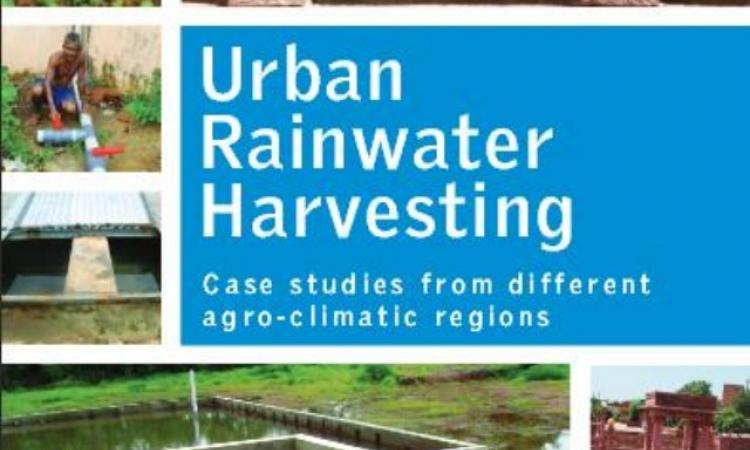
As the race to bridge the gap between limited water availability and increasing demand for water narrows in India, rain water harvesting has been increasingly recommended in urban areas to harness the available water, rather than relying on expensive and unsustainable means of procuring water.
The report titled 'Urban Rainwater Harvesting - Case studies from different agroclimatic regions' published by the Centre for Science and Environment, argues that although RWH has been made mandatory in all cities, there continues to be a considerable lack of information and understanding on the extent and potential role it plays to save and increase water reserves. There is also not enough information on its social and financial benefits.
The need for information about the challenges to implement RWH
The report states that more information is needed on the issues, challenges and potential of RWH across different regions of India to be able to truly use it as a means of water augmentation. This is because India's rainfall is unevenly distributed with respect to time and space acoss different agroclimatic regions. This calls for different strategies to be devised to harvest rainwater in different parts of the country.
The report presents an analysis of case studies on RWH initiatives in 12 different sites in India, and a detailed analysis on two of the successfully implemented RWH projects from different agroclimatic settings -- one from a scanty rainfall area (Rajasthan) and the other from very high rainfall area (Goa).
The case of Birkha Bawari in Jodhpur, Rajasthan
The report describes the case of the Birkha Bawari in Jodhpur, Rajasthan located in the Umaid heritage site in a residential complex area. The Bawari structure not only stores rainwater but also acts as a recreational space for inhabitants. It also provides a good example of sustainable urban development practice in a low rainfall region, demonstrating the value of water by conserving rainwater.
The RWH storage structure is inspired by traditional RWH structures in the region but while the traditional baolis and kunds were used to extract groundwater, the Birkha Bawari is used to catch rainwater. Apart from storage and conservation of rainwater, the project also highlights the sustainable storm water management in the housing complex, as it collects all the runoff from the site minimising water-logging in the residential complex.
The residential complex has around 15 acres of green area. The landscape is a rich mix of trees, plants and gardens as an integrated part of the complex. The stored water from the Birkha Bawari is used for maintaining green area of the housing complex. The rainwater stored can meet around 8-9 months of landscaping and horticultural water requirements.
The report informs that the RWH project is a high visibility and high impact intervention with considerable social and economic benefits to direct users as well as the surrounding environment. The system captures around 21.1 million litres of rainwater, which has helped in reducing the dependence on municipal water supply and groundwater. During the past three years, almost 50 percent less groundwater is being extracted from borewells on the site.
The RWH project in Goa University
The key objective of the RWH project in Goa University is to reduce the declining groundwater levels in the area and recharge the aquifers to reduce dependence on municipal water supply.
The University has around 1500 staff and students. The existing water demand is around 0.45 million litres per day. Around 50 percent of the water supply depends on public water and the remainder is accessed from twelve borewells on the campus. During summer, public supply is reduced and most of the water obtained is from the borewells, which has resulted in the drying up of a few.
The existing rainwater system has two main structures, one for harvesting surface runoff with a catchment of 1.5 hectares that is mainly unpaved area, and a rooftop harvesting system for harvesting the runoff mainly from built up areas on campus.
RWH at the campus has resulted in a substantial increase in the aquifer yields, which has been confirmed from the well yield tests carried out on two borewells located in close proximity of the recharge structure. Within one year of operation, well yields have increased by 13 to 15 percent showing recovery in the groundwater levels. Improved yields have also led to less electricity usage for pumping groundwater and savings in costs.
The report ends by stating that these case studies scientifically establish that it is possible to practice RWH in varied types of agroclimatic zones and the needs and strategies may vary from site to site. However, the returns are very high as compared to the simplicity of establishing and using RWH. For example, for as low as 10 cm of rainwater harvested on 1 ha. area, 1 million litres of water can be collected for recharge or storage.
These case studies provide positive examples of successful RWH efforts made in the country and should encourage further discussions within ULBs or water management organisations on the potential of mainstreaming RWH into their current and future plans for urban areas.
/articles/rwh-tale-two-successful-states